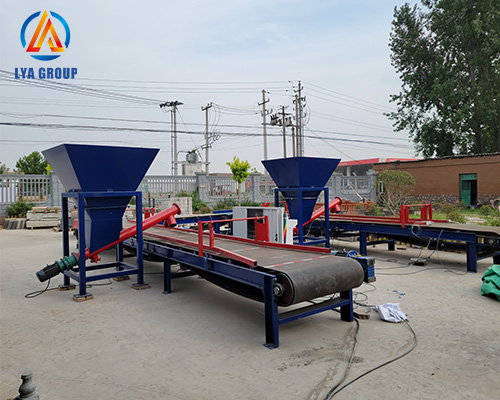Cultural stone semi-automatic production line configuration
News 2023Õ╣┤3µ£ł11µŚź 195

The configurations required to make a cultural stone production line are: Double warehouse batching machine.Double warehouse batching equipment includes double warehouse feeding equipment, double warehouse has pigment warehouse and cement warehouse, because this equipment can produce floor tiles and cultural stones, floor tiles need pigment layer and cement layer when making floor tiles, so two warehouses are needed, The cultural stone needs to be sprayed with paint when it is made. It can be sprayed manually by one person and equipped with a single-compartment feeding system. The machine can customize different configurations according to the mold samples produced by customers.
The main three advantages of the equipment are
1. CNC operation – simple and convenient, easy to operate
2. Quantitative feeding, because the size of each mold is different, floor tiles and cultural stone molds are different, the amount of cement used is different, when making Quantitative can be controlled.
3. Timing vibration .The production line includes a vibration platform, which can customize the time and frequency of the vibration table two. blender Drum mixers or forced mixers are generally used in semi-automatic production lines. What is the difference between them?
The mixing drum of the forced mixer does not move, and the uniform blades on the rotating shaft in the drum are forced to stir. The mixing quality of the forced mixer is higher, the concrete produced is more uniform, and the production efficiency is high, but its disadvantage is that the power loss is large. And the blade wears out faster. The drum mixer, also known as the self-falling mixer, puts the mixture in a rotating mixing drum. With the rotation of the mixing drum, the blades in the drum raise the mixture to a certain height, and then it can be freely sprinkled down by its own weight. , keep repeating until the mixture is smooth.
What kind of mixer do you usually use?
1. Easy to operate. In the past, the drum mixer was loaded by first starting the drum to roll, and then manually adding sand, gravel, cement, etc., which was time-consuming and laborious; but now using a forced mixer for mixing only requires a person to drive a forklift to load, sand and gravel batching and transportation, Lifting the hopper, feeding, and mixing are all done automatically, saving time and effort, and improving work efficiency.
2. Good sealing performance. The drum mixer is double-opening mixing, and the dust is flying during the feeding and mixing process, while the mixing of the forced mixer is carried out in a sealed horizontal mixing drum, so that the cement dust does not fly outside, and the working environment becomes clean.
3. The mixing material is of high quality. The mixing principle of the drum mixer is to use the self-weight of the material to form agitation when the drum rotates, and there is a situation where the material is not evenly stirred; while the forced mixer is to stir the material through the double stirring shaft, the reamer, the blade, the material is uniform, and the quality can be guaranteed. 3 times higher and more economical.
